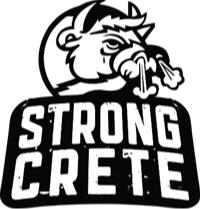Timber Grades Explained
What you need to know.
What are the Different Timber Grades?
Timber is graded based on its intended use, primarily for structural (strength) or appearance (visual quality), with common grades including A, B, C, D for appearance and structural grades like MSG (Machine Stress Graded) and MPG (Machine Graded Pine) for strength. Structural grades are identified by a number indicating strength, such as SG8 or MGP10, with higher numbers signifying greater strength.
Appearance grades range from "clears" (defect-free) down to more character-filled or rustic options. (aka more knots)
Structural grades
- Machine Stress Graded (MSG/SG): Grades like SG8 or SG6 are assigned after the timber has been mechanically tested for strength. The number indicates the grade, with higher numbers being stronger and suitable for structural loads.
- Machine Graded Pine (MGP): Used for softwoods like framing pine, with grades including MGP10 and MGP15, where the number represents strength.
- F Grades: A system used for hardwoods, where grades like F14 or F27 indicate strength. The number corresponds to the timber's structural performance.
Appearance grades:
- A (Clears/Prime): The highest grade, with no significant knots or defects. It is ideal for high-end projects like fine cabinetry and joinery.
- B (Dressing/Select): A high-quality grade that allows for minor, tight knots. It's suitable for furniture, joinery, and cabinetry.
- C (Common): Contains more knots and imperfections than B grade but is still suitable for many projects.
- D (Rustic/Character): The lowest grade, featuring numerous knots and more rustic characteristics.
The 3 Pillars of Structural Timber Specification
A timber specification is incomplete without defining its Grade, Moisture state, and Treatment. These three factors independently determine where and how the timber can be used safely.

1. Structural Grade (SG)
Defines the strength and stiffness. The higher the number (e.g., SG12), the greater the guaranteed mechanical performance (MPa and GPa values).

2. Moisture Condition (Dry/Wet)
Determines the testing basis. **'Dry'** ($<18\%$ MC) is for seasoned interior timber. **'Wet'** is for exterior timber, which has lower strength but accounts for saturation.

3. Hazard Class (H-Class)
Defines durability and protection against decay/insects. This is *independent* of the SG grade. (e.g., H1.2 for interior, H3.2 for exterior ground contact).
Frequently asked questions.
Here are some of the common questions asked on timber grades.
What is the difference between structural and appearance grades?
Structural grades (e.g., SG8, MGP10) are rated for strength and stiffness, determining their suitability for load-bearing applications. Appearance grades (A, B, C, D) focus on visual quality, with fewer knots and defects in higher grades.
How do I choose the right structural grade for my project?
Select the grade based on load requirements, span, and exposure conditions. For example, SG8 wet with H3.2 treatment is ideal for decking or pergola posts, while SG12 dry is suited for high-performance load-bearing beams.
What does SG or MGP mean?
SG (Machine Stress Graded) indicates timber tested mechanically for strength. MGP (Machine Graded Pine) is commonly used for softwoods like framing pine. The number after the grade (e.g., SG8, MGP10) represents its strength rating.
What is moisture content and why does it matter?
Moisture content affects timber strength and movement. Dry timber (<18% MC) is stronger and suited for interior use. Wet timber is tested green and used for outdoor applications where exposure to moisture is expected.
What are Hazard Classes (H-Class)?
H-Class indicates timber durability against decay and insects. Examples: H1.2 for interior, H3.2 for exterior above-ground, H4 for ground contact. The grade (SG or MGP) is independent of treatment, but both must match your project requirements.
Can I use a lower appearance grade for furniture?
Yes, but expect more knots and character. B-grade timber is usually safe for furniture or cabinetry, while C or D grades are better suited for rustic or outdoor applications where appearance is less critical.
How do I know if timber is suitable for decking?
For decking substructure, choose structural grade SG8 or higher, wet-tested with H3.2 treatment. This ensures sufficient strength, durability, and resistance to outdoor conditions.
Are NZ timber sizes standardised?
Nominal “Call Sizes” are reduced in actual dimensions after drying and machining. For example, a 100 x 50 call size typically measures 90 x 45 mm when gauged kiln-dried. Always check actual dimensions for accurate construction planning.
What defects should I watch for in timber?
Common defects include knots, splits, shakes, and wane. Appearance grades A and B have minimal defects. Structural performance is still reliable in SG or MGP grades despite small knots, but large defects may weaken the timber.





